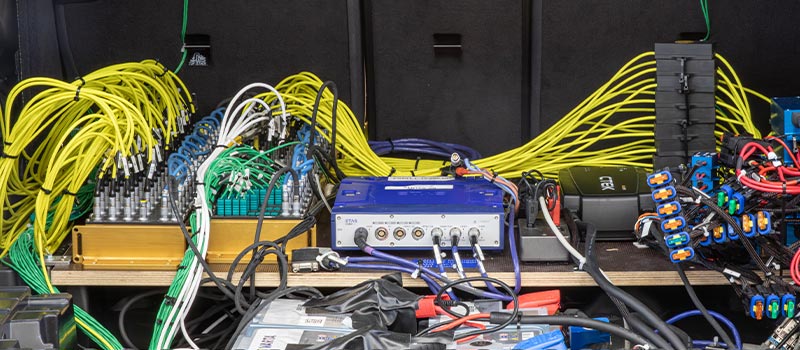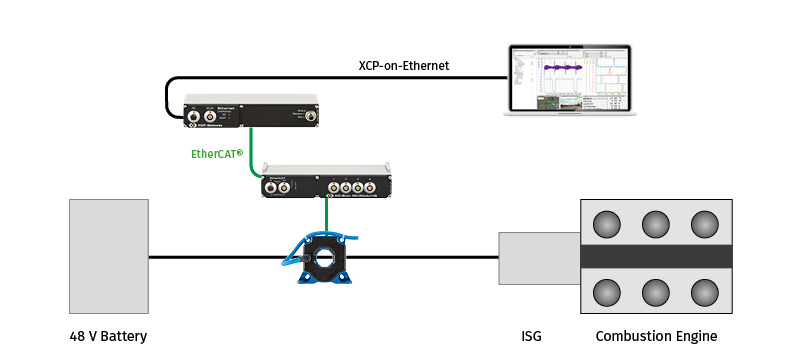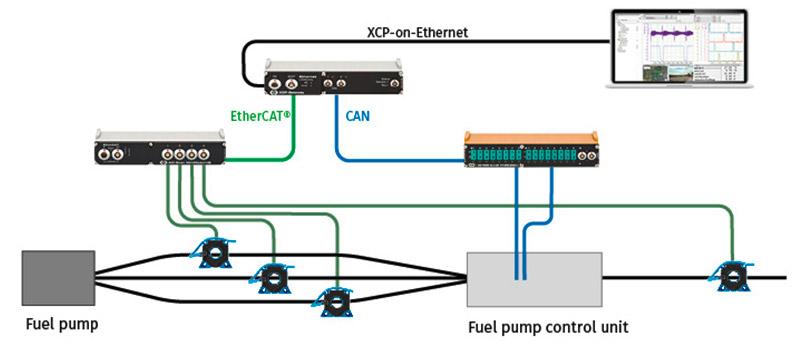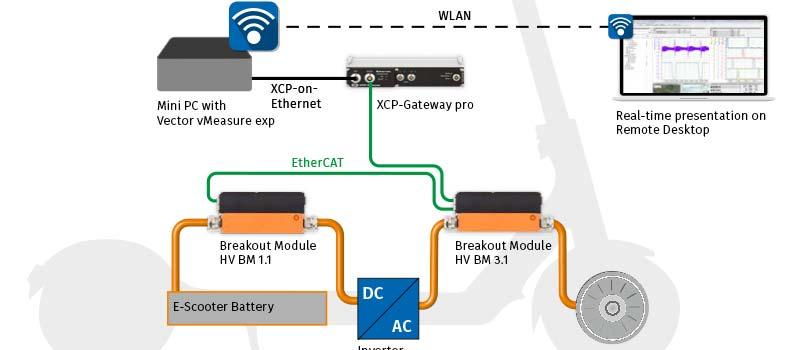

Currents and voltages must also be measured in low voltage environments. Here we show you how such measurements are carried out with CSM measurement technology.

Offering long ranges for electric cars is one of the biggest challenges for vehicle manufacturers. The decisive factor here is the total energy consumption of the vehicle. Often, only the consumption of the electric powertrain is considered, but: How much does the low-voltage vehicle electrical system, which includes driver assistance systems and infotainment, contribute to discharging the drive battery? For competitive analyses, the currents of these components were therefore examined in more detail: Around 100 CSMshunts of different variants were used for benchmarking an e-SUV.

In order to further optimize efficiency and driving comfort, automobile manufacturers are using integrated starter generators (ISG) in mild hybrid vehicles. Fast current and voltage measurements are crucial for the optimal application of this technology. CSM offers the suitable measurement technology to perform measurements with high data rate and also in mobile testing.

To further minimize fuel consumption, the fuel supply must also be regulated according to demand. The recording of current curves on the fuel pump control unit over a long period of time is intended to verify whether its fuse is correctly dimensioned. In the following application report you will learn how such a measurement can be carried out easily and how the advantages of CAN and EtherCAT-based measurement modules can be combined.

The range of electric vehicles determines their suitability for everyday use and acceptance by users. For a steady increase in range, the electric power trains and their components must be continuously optimized. The following example shows how an efficient power measurement in the low-voltage range is carried out. Similarly, such a measurement could also be made in the HV range.